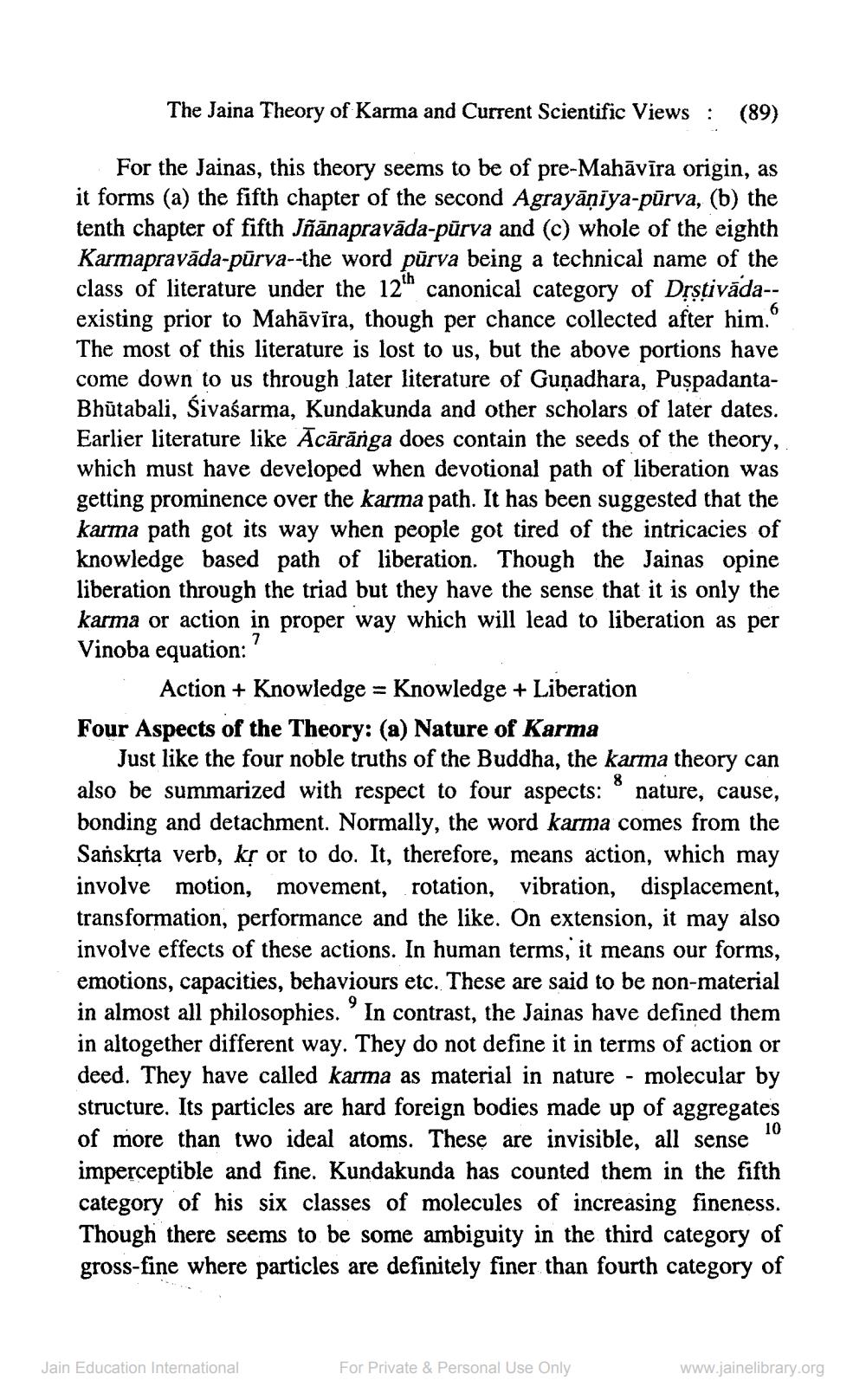________________
The Jaina Theory of Karma and Current Scientific Views : (89)
For the Jainas, this theory seems to be of pre-Mahāvīra origin, as it forms (a) the fifth chapter of the second Agrayāṇīya-pūrva, (b) the tenth chapter of fifth Jñānapravāda-pūrva and (c) whole of the eighth Karmapravāda-pūrva--the word pūrva being a technical name of the class of literature under the 12" canonical category of Drstivāda-- existing prior to Mahāvīra, though per chance collected after him.' The most of this literature is lost to us, but the above portions have come down to us through later literature of Gunadhara, PuşpadantaBhūtabali, Śivaśarma, Kundakunda and other scholars of later dates. Earlier literature like Ācārārga does contain the seeds of the theory, which must have developed when devotional path of liberation was getting prominence over the karma path. It has been suggested that the karma path got its way when people got tired of the intricacies of knowledge based path of liberation. Though the Jainas opine liberation through the triad but they have the sense that it is only the karma or action in proper way which will lead to liberation as per Vinoba equation:'
Action + Knowledge = Knowledge + Liberation Four Aspects of the Theory: (a) Nature of Karma
Just like the four noble truths of the Buddha, the karma theory can also be summarized with respect to four aspects: nature, cause, bonding and detachment. Normally, the word karma comes from the Sanskrta verb, kr or to do. It, therefore, means action, which may involve motion, movement, rotation, vibration, displacement, transformation, performance and the like. On extension, it may also involve effects of these actions. In human terms, it means our forms, emotions, capacities, behaviours etc. These are said to be non-material in almost all philosophies. ' In contrast, the Jainas have defined them in altogether different way. They do not define it in terms of action or deed. They have called karma as material in nature - molecular by structure. Its particles are hard foreign bodies made up of aggregates of more than two ideal atoms. These are invisible, all sense" imperceptible and fine. Kundakunda has counted them in the fifth category of his six classes of molecules of increasing fineness. Though there seems to be some ambiguity in the third category of gross-fine where particles are definitely finer than fourth category of
Jain Education International
For Private & Personal Use Only
www.jainelibrary.org




